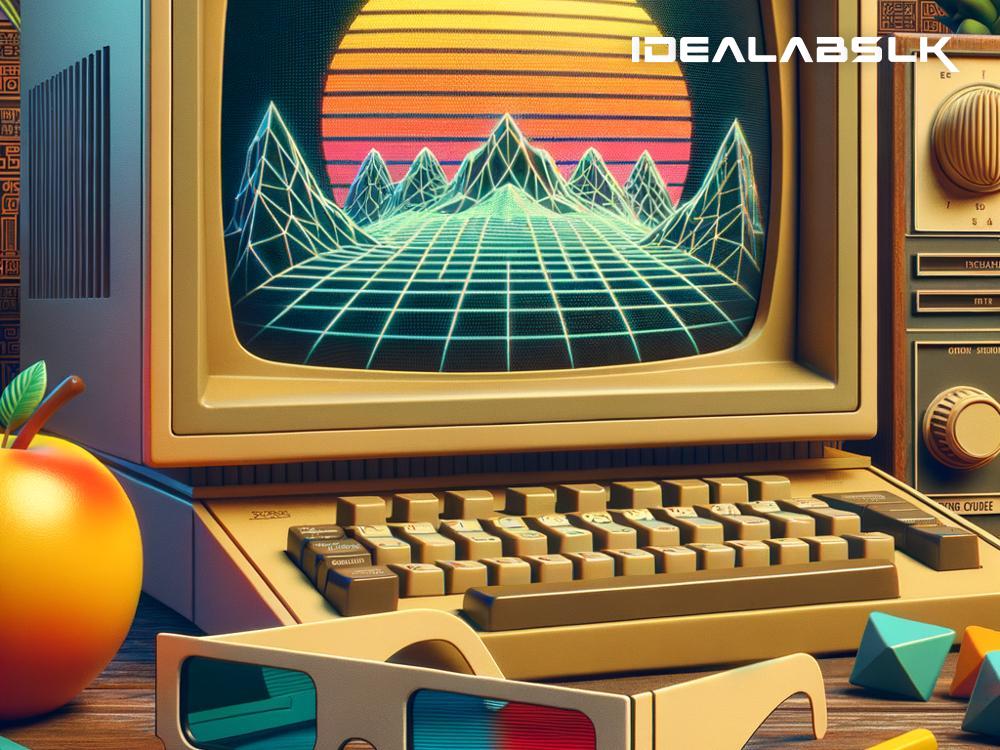The Fascinating Evolution of 3D Technology: A Journey Through Time
Have you ever marveled at a 3D movie in the cinema, played a videogame that felt almost real, or used a VR headset that transported you to another world? If so, you've experienced the magic of 3D technology. But, have you ever wondered where it all began? The evolution of 3D tech is a story of human ingenuity, creativity, and the relentless pursuit of bringing imaginations to life. Let's delve into the history of 3D technology and explore its incredible journey from simple beginnings to the complex systems we use today.
The Early Days: From Stereoscopy to Anaglyphs
The tale of 3D tech begins in the 19th century with the invention of stereoscopy. Invented by Sir Charles Wheatstone in 1838, stereoscopy was a technique that created the illusion of depth in an image by combining two pictures taken from slightly different angles. When viewed through a stereoscope, these images would merge into one, giving the viewer a sense of depth and three-dimensionality.
As technology advanced, so did the methods of viewing 3D. In the 1950s, anaglyph glasses, those red and blue glasses you might have seen in old comic books or 3D movies, became popular. They worked by filtering the two differently colored images on the screen or page, one for each eye, creating a 3D effect. Although rudimentary by today's standards, anaglyphs were a significant leap forward in 3D tech.
The 1960s to the 1990s: Virtual Reality and Beyond
Fast forward to the 1960s, and we see the embryonic stages of virtual reality (VR). Morton Heilig, a cinematographer, envisioned an experience that would engage all of the senses, not just sight and sound. He created the Sensorama in 1962, a machine that played 3D movies along with wind, vibrations, and smells to provide a fully immersive experience. Although it didn't catch on commercially, the Sensorama laid the groundwork for modern VR technology.
In the 1980s and 1990s, interest in VR and 3D technology surged. Video games and computer graphics provided new platforms for 3D visualization. Games like “Wolfenstein 3D” and “Doom” amazed players with their pseudo-3D environments, while movies like “Terminator 2” and “Jurassic Park” showcased groundbreaking 3D graphics and special effects. These advancements were not only a testament to how far 3D technology had come but also a hint of what was possible.
The 2000s: A New Millennium of 3D
The turn of the millennium brought with it significant advancements in 3D technology. Movies and games continued to push the boundaries of what was possible, with films like “Avatar” in 2009 showcasing stunning 3D visuals that were leaps and bounds ahead of what had been done before. This period also saw the rise of consumer VR headsets and augmented reality (AR), technologies that blend the real world with digital 3D objects.
The Present and Future: 3D Printing, AR, and VR
Today, 3D technology is not just about viewing; it's about interacting with and creating in a 3D world. 3D printing allows us to transform digital objects into physical ones, revolutionizing industries from manufacturing to medicine. VR and AR technologies have matured, providing immersive experiences that were once the realm of science fiction. From VR gaming systems that track your movements in a virtual world to AR apps that overlay digital information onto the real world, the possibilities are endless.
The future of 3D technology holds even more promise. Advances in holography are aiming to create realistic 3D projections that don't need special glasses to be seen. Researchers are also working on more immersive and intuitive VR and AR systems, making these experiences more accessible and enjoyable for everyone.
Conclusion
From its humble beginnings with stereoscopy to the cutting-edge VR and AR systems of today, the history of 3D technology is a testament to human creativity and technological progress. It has transformed entertainment, gaming, design, and countless other fields, bringing ideas to life in ways our ancestors could hardly have imagined. As we stand on the cusp of new advancements, one thing is for sure: the journey of 3D technology is far from over, and its next chapters are bound to be even more exciting. Let's strap in and enjoy the ride into the three-dimensional future.

